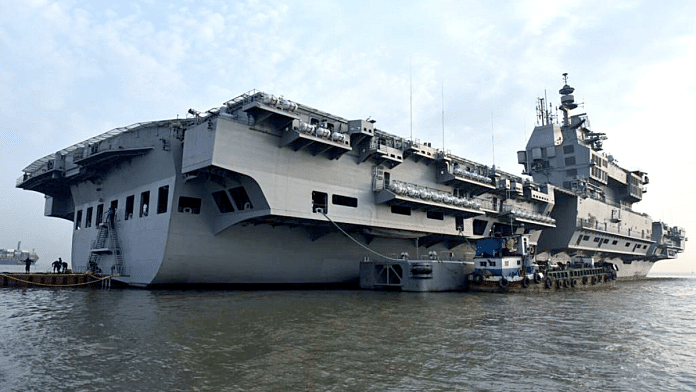New Delhi: From its initial mission of integrating the diverse equipment on board naval ships to refining the indigenous Combat Management System, the Indian Navy’s nucleus of system engineers have come far in 45 years and is shaping the force’s foray into the next generation of war-fighting tactics.
Starting in the mid-1960s, the Indian Navy had embarked upon warship-building projects state-run shipyards. However, while the platforms remained indigenous, an overwhelming number of weapons and sensors were imported from various countries.
This resulted in the establishment of a project management group, Weapons and Electronics Systems Organisation (WESO), in July 1978 with the aim to create a nucleus of systems engineers to undertake the task of integrating the diverse range of equipment on board ships.
Started with a group of 20 naval officers, scientists and staff, the organisation initially operated out of a hired house at New Delhi’s Safdarjung Enclave and later shifted to Civil Lines.
Now known as the Indian Navy’s Weapon and Electronic Systems Engineering Establishment (WESEE), it is working on the next generation version of its indigenous Combat Management System that is fitted on board all Indian naval ships, including the indigenous aircraft carrier INS Vikrant.
CMS serves as the nervecentre on board warships as it integrates sensors such as radars, sonars, electronic warfare (EW) systems, automatic identification system (AIS) with weapons that may include guns, missiles and torpedoes as well as rockets.
The organisation is managed by a Management Board, chaired by Secretary Department of Defence (R&D) and comprises senior functionaries of the DRDO, MoD, MoD (Finance), besides the Chief of Materiel (COM), Indian Navy and Director General, WESEE.
WESEE is working to replace the existing Software Defined Radio (SDR) onboard navy ships with indigenous and latest versions of software-defined radios (SDRs). An SDR functions as an enabler of seamless communication at sea with other Indian ships and naval aircraft. It was in 2009 that preliminary work was initiated for the first time for the development of an indigenous SDR together with laboratories of the Defence Research and Development Organisation (DRDO).
The initial WESO was tasked with systems integration for Project–16 (Godavari class) frigates. The Godavari class ships had a mix of Soviet weapons, Western and Indian sensors, and communications equipment. The task of systems integration for Godavari required creation of expertise in communication protocols, embedded systems, and software development.
Currently, WESEE operates in four main domains of Combat Systems Integration, Combat Management Systems, Networking & Data Links and Cyber Security.
The Navy’s organisation has to its credit system integration of Project-16A (Brahmaputra class), Project-15 (Delhi class), Project-25A (Kora class) and Project-1241RE (Veer class) ships, integration of the Modular Data Bus (MDB) and development of Modular Interface for Ship-borne Systems (MISS boxes).
With an eye on cyber security, the WESEE’s Cryptography Development Laboratory is one of the few laboratories in India that is authorised by the National Cipher Policy Committee to undertake the development of cryptographic systems in the government.
In 2014, WESEE was designated as the Integration Authority of the Indian Navy. “Today, we are experimenting with every latest technology available in the market. The industry has technologies and it is of use only when it has a user. Hence, we partner with the industry. We are into the latest, high-tech technologies such as quantum, autonomous vessels, AI big data, laser communication as well as Block Chain. We are either working in house with our team or partnering with the Indian industry. This also motivates the industry to take their technologies forward,” said an officer at WESEE.
“The domain expertise and experience available at WESEE bridges the gaps in identifying the required interfaces so as to ensure optimal utilisation of the capability that the new equipment offers in consonance with the role of the designated platform,” the officer added.
(Edited by Tony Rai)
Also Read: Boost to India-US ties: 5-yr deal signed, L&T shipyard is now repair hub for American naval ships



